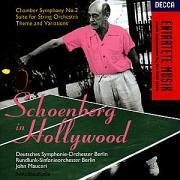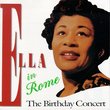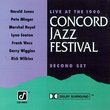| All Artists: Arnold Schoenberg, John Mauceri, Berlin Radio Symphony Orchestra, Berlin Symphony Orchestra, Deutsches Symphony Orchestra Berlin Title: Schoenberg in Hollywood Members Wishing: 0 Total Copies: 0 Label: Polygram Records Release Date: 6/10/1997 Genre: Classical Styles: Historical Periods, Modern, 20th, & 21st Century, Instruments, Keyboard Number of Discs: 1 SwapaCD Credits: 1 UPC: 028944861921 |
Search - Arnold Schoenberg, John Mauceri, Berlin Radio Symphony Orchestra :: Schoenberg in Hollywood
 | Arnold Schoenberg, John Mauceri, Berlin Radio Symphony Orchestra Schoenberg in Hollywood Genre: Classical
You've got to love this disc just for its cover, a "colorized" black-and-white photograph which shows the composer in tennis shoes, wearing an implausibly pink short-sleeve shirt, playing ping pong. The message here is sun... more » |
Larger Image |

 Track Listings (8) - Disc #1
Track Listings (8) - Disc #1



